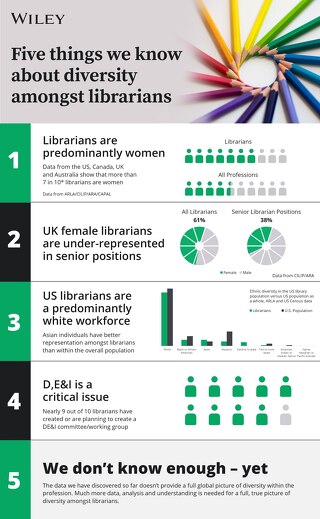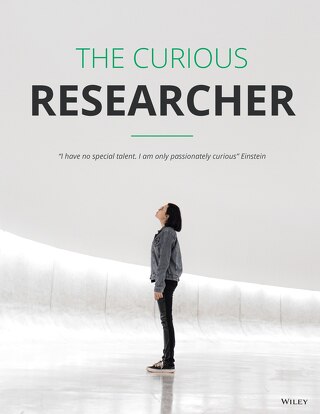6-challenges-impeding-technology-adoption-in-academic-and-research-libraries
April 30, 2018
Back in the day academic and research libraries (ARLs) were known for two basic things—they had a huge collection of source materials, and they had librarians who could help you find what you needed. Today the rapid pace of technological and sociological change has required libraries to adapt. Students and researchers now find source materials online, and teaching and learning methodologies often involve hands-on creative activities versus absorbing content passively. In response, libraries have expanded the services they provide through the use of technology. Technological solutions are being used to determine best space usage practices, develop enhanced search engine capabilities, and create new data storage and retrieval systems.
In the NMC Horizon Report: 2017 Library Edition, education and technology experts consider six challenges ARLs face in implementing these new technologies. The Report is produced by the NMC Horizon Project, an effort founded in 2002 to study technological developments expected to significantly impact education-related institutions. After an extensive cycle of discussions, the Horizon Project team sorted what they determined to be the most significant impediments to technology adoption by ARLs into three categories based upon the nature of the identified challenges: solvable challenges, difficult challenges, and wicked challenges.

Solvable Challenges are those that we understand and know how to solve. The two solvable challenges discussed in the Report include Accessibility of Library Services and Resources, and Improving Digital Literacy.
1. Accessibility of Library Services and Resources
This challenge involves addressing how technological advances can negatively impact disabled persons. For example, while content is increasingly digitalized, the producers of that content are not necessarily concerned with accessibility. In response, ARLs are ensuring assistive technologies such as text-to-voice are available to their patrons and they are working with content producers to develop products designed to take advantage of current and future accessibility technologies. Likewise, ARLs are working with educators to ensure accessibility issues are considered during curriculum development.
2. Improving Digital Literacy
With the advent of the digital data environment, students, researchers and educators need to understand more than how to utilize digital tools and platforms. Rather, they need to understand the fundamental nature of the digital environment to enable them to creatively apply new technologies and to work in newly-enabled collaborative creation efforts. In addition, they need to comprehend the pitfalls digital technology can create (such as the uncritical acceptance of misinformation posted online). To address such challenges, ARLs are participating in digital literacy initiatives with business, academic and other governmental agencies to define and develop the needed competencies as well as related training programs.
Difficult Challenges are those we understand but for which solutions are elusive. The two difficult challenges discussed in the Report include Adapting Organizational Designs to the Future of Work; and Maintaining Ongoing Integration, Interoperability, and Collaborative Projects.
3. Adapting Organizational Designs to the Future of Work
Rapid technological advances are changing the way we work. Jobs increasingly require higher social and analytical skills than in the past. This reality has revealed a need to reconsider traditional organizational structures. Just as in the business world, library organizational structures have traditionally been largely hierarchical with decision-making being made at the top. The new reality, however, calls for more flexible, team-based decision-making to enable organizations to be more responsive to customer/patron needs. While such changes offer the promise of more seamless exchanges of information and higher technical competence of staff, what makes this challenge difficult is that as ARLs seek to redefine traditional roles, their staff members face steep learning curves and consequently often resist needed changes.
4. Maintaining Ongoing Integration, Interoperability, and Collaborative Projects
This challenge involves research funding initiatives and coordinating research information management systems and digital repositories. Much research funding is obtained in the form of competitive grants and awards, so it is critical that ARLs achieve and maintain high profiles and reputations in the eyes of funding agencies. To achieve this, it is incumbent on ARLs to establish strong partnerships with other research institutions. The proliferation of various research data storage and accessibility platforms require the development of interoperability methodologies. What makes these challenges especially difficult is a continually evolving research environment in which is difficult to develop universal standards which, in turn, allow ARLs to efficiently share their findings with funding sources.
Wicked Challenges are those that are difficult to define, much less address. The two wicked challenges discussed in the Report include Economic and Political Pressures, and Embracing the Need for Radical Change.
5. Economic and Political Pressures
Academic and research libraries face mounting economic challenges as the pace of research generation and publication increases. In addition, falling student enrollment, rising subscription costs, and diminishing government funding add to the need for more efficient operations. In response, ARLs have prioritized adopting technologies that cut costs through efficiencies. The problem is that the adoption of new technologies can be costly in itself: to gain efficiencies, you have to spend money up front. On top of this, the political climate can at times create challenges to ARL’s core principles of intellectual freedom.
6. Embracing the Need for Radical Change
With data increasingly stored in digital form in the Cloud, ARLs are reassessing their acquisition strategies and the nature of the services they provide. In this new reality they must determine how best to utilize their physical space and what services they should provide going forward to maximize their value propositions. This highlights the need for ARLs to work with educators and others to find ways to integrate their offerings into academic programs.
In addition to these challenges to ARL technology adoption, the Report also discusses trends influencing technology adoption in libraries (see the recent post, Six Trends Driving Technology Adoption in Libraries) as well as new library technologies on the horizon. We will discuss these upcoming library technologies next month in a post entitled “Six Important Developments in Technology for Academic and Research Libraries.” Stay tuned!










